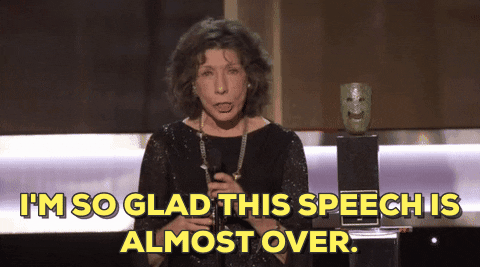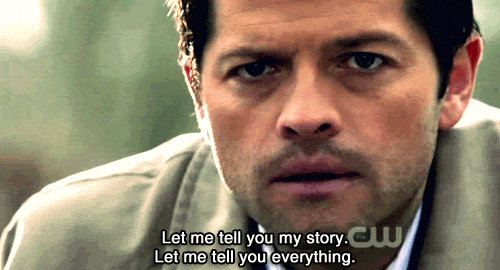How to Write a Killer Video Script


– Robert Bresson
On paper, it seems easier to write a script. After all, all you have to do is talk about yourself, your brand, and your products or services.
In reality, not really.
With businesses emerging left and right, the competition couldn’t be tougher than it already is. Noticeably, it has caused audiences’ attention to drift one way or another. In other words, towards a brand that spends more time getting down the audience level to grab them by the hook.
While we’re no strangers to the power of “silence speaks” (all hail the great Charle Chaplin), yet sometimes, it takes a word or two to create an impact. Especially in the business world.
So, before you dive into the production, animation, and other details, let’s focus on the pre-production part. One that’s often neglected but holds the power to paint a pretty image – scriptwriting.
If you haven’t tried your hand at scriptwriting yet, this blog will serve as a turning point to help you boost your skills. Ultimately, you can use this skill to reap business success.
Before you pick up a pen and paper to jot down your thoughts, some preliminaries need discussion.
Whether you aim for a 1-minute video or a 5-minute one, defining your goals is crucial. Clear goals as a head start help track your performance once you publish the content.
fact, any strategy wouldn’t exist if not for ruling out who your ideal customers are. It’s equally important to figure out the problem they face and how your product or service will help them solve it.
Allotting a budget doesn’t mean you have to go overboard or arrange fancy equipment. But it’s more about setting a limit according to your business demands.
There isn’t a marketer or advertiser in the modern world who is unaware of the AIDA Model. But if you’re new to it, here’s a quick overview:
AIDA model is widely used in digital marketing channels to move prospects down the marketing funnel. As a standard rule, the acronyms denote stages from which a potential customer shifts one after another.
Renowned scriptwriters use this model to write creative video scripts, as it focuses on creating awareness, leading to interest, evoking a desire to take action. And that’s the ultimate goal of your marketing video, which brings us to our next question.
Knowing what to convey is significant, but how to convey it effectively is where the real struggle lies.

Let’s face it. There’s a difference between an audience entering a movie theatre to watch a movie willingly and your everyday internet scroller clicking on a video randomly.
The instinct to shut down the video becomes stronger with every passing minute (in some cases, the interest drops within seconds given a dull content). That’s why it’s vital to keep your script within the limit.
Now, there’s no hard and fast rule to the ‘best’ time limit. But on average, a viewer can continue watching a video that’s between 4-8 minutes.
Of course, the recent trends have leveled up the competition with several 30-seconds to 1-minute videos leaving a strong impact.
For example, see this one:
A shorter script means you have to capture the crux of your message in the start to fixate your viewer in one place.
It could be a single line or a catchy phrase that’s enough to make your audience continue watching. And even if they exit the video, your message will be delivered within the first 30 seconds.
Ta-da! Mission Accomplished.

Your product, service, and company are as valuable as they appear to your customers. So, even though you earned a million dollars as revenue in the second quarter, your audience will only be interested in listening if it benefits them.
The best way to make your viewers stick to your video is by talking to them than at them.
Use words such as ‘you’ and ‘your’ or show them things they care about. Focus on what they want to hear than what you want to tell them. Doing this helps build trust, leading them down the marketing funnel to desire, and ultimately, towards action.

It’s an age-old truth: humans grow old, but the desire to listen to stories never does.
From listening to bedtime stories to transitioning into novels, and in the current world, swiping through video ads, people love hearing stories. And that’s where you can leverage that emotional thread to the best advantage.
Powerful storytelling comes when you understand your audience’s needs and present a solution at the end as well. After all, it’s not a boring PowerPoint presentation in a classroom setting. 😁
Currently, marketers use several approaches to write a killer video script. Some of the best include:
Use this scriptwriting method when offering a product or service that solves people’s issues. You can attract attention right away with a starting phrase stating:
This approach works best when introducing an innovative idea, product, or service that’s unknown to your target audience. That means you have to start with the direct introduction and features to leverage as much time as possible to deliver your message.
This form of scriptwriting is best to introduce a character who used your service or product, explaining how it helped solve their issues.
It’s a known tactic to build trust, as the audience can see the direct impact your solution delivered. This approach also uses the power of storytelling, emotions, and all the right ingredients to humanize your brand.
Pro-tip: Use humor, but be careful as a misplaced joke can affect your viewers’ perception of you as a business.
“It is better to write a bad first draft than to write no first draft at all.”
– Will Shetterly
We’d do better than to disagree with Shetterly, but we’ll add this too: it’s better late than never.
So, with that being said, use all the above tips to craft your first script. Only after a few exercises will you see that although it takes effort, it’s not unattemptable. But if you’d like a hand, Animationprolabs has its doors open for you.
Happy scriptin’!